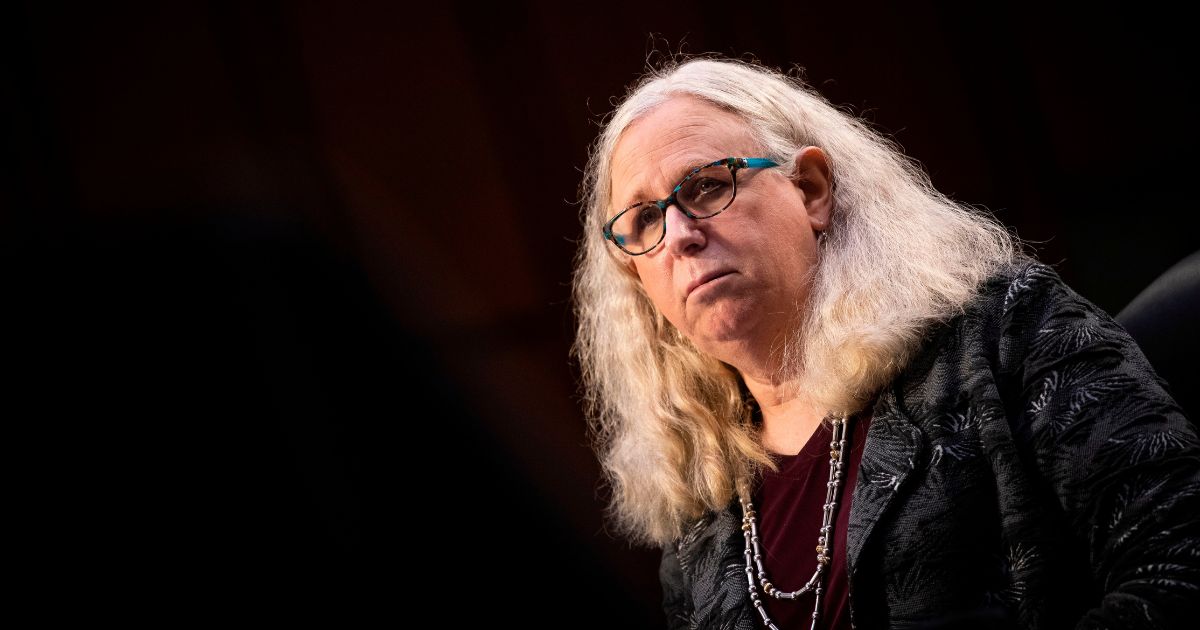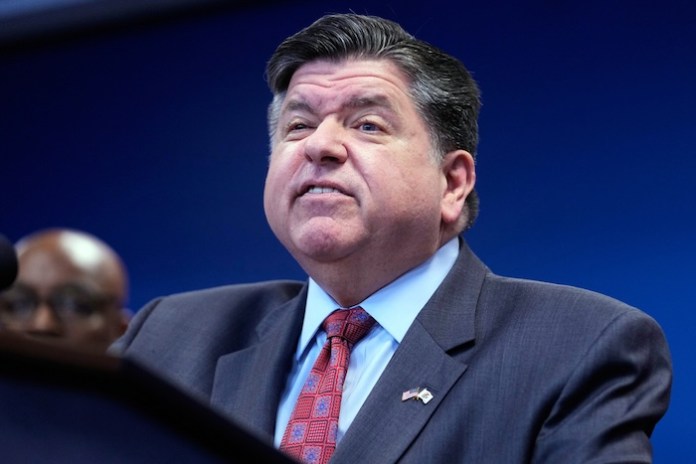HHS Funded Curriculums Asking Teens To Fantasize About Using Condoms
The U.S. Department of Health and Human Services (HHS) recently announced a crackdown on inappropriate sexually explicit content aimed at children under its Teen Pregnancy Prevention Program (TPPP). This initiative emphasizes that federal funds cannot support curricula promoting radical ideologies or inappropriate materials. The announcement aligns with a recent Supreme Court ruling that grants parents the right to opt their children out of certain educational content.
HHS aims to ensure that program materials reflect biological realities rather than radical gender ideologies. Despite this, investigations revealed that some curricula previously funded included graphic demonstrations of condom usage and even encouraged exposure to pornography.
One controversial curriculum called “Be Proud! Be Responsible!” involved invasive practices where adolescents learned to use condoms through role-playing scenarios and modeling, even suggesting they should view condom use as a fun act. Another curriculum, “Relationship Smart PLUS,” examined the implications of pornography on teens, acknowledging its potential harms while also controversially suggesting that certain types of pornography could be acceptable.
HHS’s new guidelines seek to refocus teen sexual education on medically accurate and age-appropriate content aimed at preventing teen pregnancies rather than promoting ideologies or risky sexual practices.
The U.S. Department of Health and Human Services (HHS) is cracking down on the kinds of sexually perverse material being produced for children under its Teen Pregnancy Prevention Program (TPPP), putting all recipients of federal grant funding on notice Wednesday, saying, “Federal funds may not be used to indoctrinate America’s children with radical ideologies or other inappropriate material.”
HHS’s notice also brigs the program in line with the Supreme Court’s opinion in Mahmoud v. Taylor last week, which acknowledges a parent’s right have advanced notice of content to opt their child out of material if they so choose.
“Program materials are expected reflect the immutable biological reality of sex, not radical gender ideology, and may not promote anti-American ideologies such as discriminatory equity ideology,” the announcement from HHS states. “Programs with such unauthorized content are not eligible for federal funding.”
The TPPP is intended “to reduce teen pregnancy through medically accurate and age-appropriate programming, not to promote harmful ideologies, risky sexual activity for minors, or other content outside the scope of the program,” HHS stated, but as documents obtained by The Federalist, and confirmed as authentic by an HHS official, show, the funding was being used to create curriculums that had children take part in graphic demonstrations of condom use and encouraged the use of pornography.
An HHS official told The Federalist that not only do many of these curriculums have little to do with preventing teen pregnancy, but some go disturbingly far to have minors confronted by sexual content under the guise of preventing teen pregnancy.
Teens Must Prove Their Skill Using Condoms
One such curriculum, called “Be Proud! Be Responsible!” was created by AccessMatters (formerly known as the Family Planning Council), which is a pro-abortion organization. The curriculum is aimed at adolescents, typically between 10 and 19 according to the National Institutes of Health (NIH).
Much of the curriculum is about HIV prevention, which lends itself to the idea that it is not really about teen pregnancy prevention, and even states “Some adolescents may identify themselves as heterosexual, but engage in same-sex sexual activity.” However, the module on condom use is quite invasive.
Materials for the curriculum include “Condoms (one per participant or pair plus demonstration condoms),” “Water-based lubricant,” and “Penis models,” and a large portion of it is dedicated to having adolescents touch condoms, put them on a model penises, and engage in “role play” scenarios where students are asked to act out how to negotiate using a condom with a potential sexual partner.
“Many adolescents find it difficult to obtain condoms and use them correctly — to put them on gracefully without interrupting sexual activity and to take them off correctly,” it states. “This curriculum provides necessary skills by letting participants handle condoms and practice working with condoms, using a penis model or their fingers as props.”
It has step-by-step instructions on how to put the condom on the penis model, asks the minors to demonstrate their capability, and also display that they have memorized the steps necessary to do so.
One of the goals of the curriculum is to encourage minors to “feel proud and responsible” for using condoms.
Participants will handle condoms and learn the correct steps involved in using a condom. They will view entertaining, educational and culturally relevant DVDs depicting teens in various situations. These videos evoke feelings, thoughts, attitudes, beliefs and stereotypes about HIV infection, risky sexual behavior and prevention skills. Participants will also take part in a variety of roleplay situations that provide them opportunities to use and practice the skills of negotiating condom use, delaying sexual involvement and abstinence, and will receive feedback during and after each roleplay activity. Closure activities review information in fun and interactive ways.
While it does mention “abstinence” and “delaying sexual involvement” as positives, it puts those methods in the same category as condom use, and sometimes couches use of those techniques in terms of whether or not condoms are available at the time.
“While participants open the packages and begin exploring the condoms, model your comfort with the condoms,” directions to the instructor state. “Open a package, take the condom out. Put it on over your hand and pull it up your arm, showing them how strong it is and how it can accommodate any sized penis.”
“Just as a person might need time to adjust to wearing a new pair of shoes or glasses, using a condom requires getting used to new sensations,” it adds as a line to tell the students.
It also has a section on “how to make condoms fun and pleasurable,” which gives tips on how to “increase spontaneity” by, among other things, “eroticiz[ing] condom use with partner.”
The instructor would then ask students to write responses to prompts “condoms could make sex more fun by …” and “condoms would not ruin the mood if we …” and then engage in a class discussion.
It also provides a list of “additional ideas” if they were not mentioned by the class, including, “Use condoms as a method of foreplay … Think up a sexual fantasy using condoms … Tell your partner how using a condom can make a man last longer … Act sexy/sensual when putting condoms on … Have fun putting them on your partner — pretend you are different people or in different situations … Use flavored condoms for oral play.”
“Be Proud! Be Responsible!” seeks to tackle certain “barriers to condom use” including “Adolescents’ concerns about effects of condoms on sexual enjoyment,” but encourages their use by telling students that “Condoms can make an erection last longer.”
Pornography and Pregnancy?
Large sections of another curriculum, called “Relationship Smart PLUS: 13 Lessons for Teens About Love and Romance,” further shows a lack of focus on preventing teen pregnancy, but also has some seemingly incoherent (and lengthy) commentary on pornography use.
While the 457-page curriculum does take time to go through the many negatives of pornography use, including mentally, physically, and socially, it also turns around to essentially say that certain types of pornography are bad, while others are okay.
“While it’s difficult to get an exact data point, it’s safe to say that a majority of teenage boys have visited porn sites, with girls not far behind. Much of the porn young people are consuming reflects traditional dynamics of male dominance and female submission. In a 2020 analysis of more than 4,000 scenes on Pornhub, 45% contained sexual violence. The targets of aggression (primarily women) generally offer no emotion or show pleasure,” the study states. “Intentional searches typically start in the middle school years and before most boys have masturbated or were able to ejaculate.”
It details how adolescents, particularly now, are susceptible to seeking out pornography to learn about sex and therefore obtain incorrect, unethical, and unrealistic expectations about sex and relationships, but then says that teens should simply “make informed decisions about porn for yourself” and “you can decide to consume media that can help you to form the kind of relationships you want now and in the future.”
The curriculum emphasizes that pornography “can be ethically produced and feminist” but that “what’s portrayed in the porn that teens typically view is a far cry from sex that is positive, consensual, mutually pleasurable, joyful, safe, and realistic. The occasional adult feminist porn site that may actually portray erotica as opposed to porn is not what the multi-billion-dollar porn industry is putting out there for general consumption.”
Pushing further, the curriculum states that it is “going to be a discussion to help you become an informed decisionmaker about what you watch or don’t watch when it comes to porn.”
Aside from the fact that pornography use almost inherently has nothing to do with preventing teen pregnancy, the message itself is highly flawed.
It asks teenagers to be discerning when it comes to the kinds of pornography content they might watch, separating hardcore, violent, and abusive content from perhaps other content that is more realistic and seemingly “romantic.” Aside from the fact that, if anything, the message should be that pornography is always destructive, it brushes aside the inevitability that watching softer versions of porn almost always leads to seeking out increasingly hardcore pornography.
The narrative that the curriculum endorses, that simply watching softer pornography will be fine, is actually undercut by the curriculum itself which goes in detail through an interview with singer Billie Eilish, who has notably criticized pornography and its effects on young people and spoke about its escalating nature.
Eilish stated she started watching pornography when she was 11 years old. “When I was 14, I was watching abusive porn. … I was watching abusive porn. That’s what I thought was attractive. It got to a point where I couldn’t watch anything else unless it was violent,” she stated.
Part of that is because pornography works on the human brain like a drug, and more use leads to even more use in order to find the same “high” as before, and as desensitization sets in, frequency and the level of extremeness increase.
Despite some of the messaging showing that pornography is harmful, HHS will no longer be funding programming that does not advance teen pregnancy prevention.
Breccan F. Thies is a correspondent for The Federalist. He previously covered education and culture issues for the Washington Examiner and Breitbart News. He holds a degree from the University of Virginia and is a 2022 Claremont Institute Publius Fellow. You can follow him on X: @BreccanFThies.
" Conservative News Daily does not always share or support the views and opinions expressed here; they are just those of the writer."




